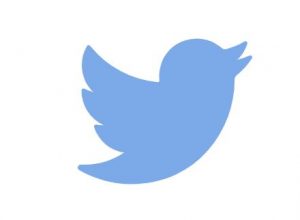The possibilities are endless!
Folds are a great way for designers to expand their creative options when designing any printed piece. Folds are organization tools for sharing a story, directing your readers’ attention, or even surprising your reader while adding impact to your brochure’s design. Carefully choosing where and how you would like your brochure to fold before beginning the design process is an essential step to planning a mailer, invitation, brochure or other folded piece.
Considering how you will use folds before beginning a design will save you valuable time, energy, and money in the final execution and production.
Common Fold Types:
 Bi-Fold: Simplest type of fold, a single fold created by folding the sheet once. Perfect for simple presentations with small amounts of content.
Bi-Fold: Simplest type of fold, a single fold created by folding the sheet once. Perfect for simple presentations with small amounts of content.
 Tri-Fold (letter fold): Created by folding the sheet into thirds, simple and easy to read for business collateral. Typically produced on an 8.5”x11” sheet and folded into three panels approximately 3.667” in size. Sometimes also called a "C" fold.
Tri-Fold (letter fold): Created by folding the sheet into thirds, simple and easy to read for business collateral. Typically produced on an 8.5”x11” sheet and folded into three panels approximately 3.667” in size. Sometimes also called a "C" fold.
 Z-Fold: Similar to the tri-fold, this fold is created by folding the sheet into thirds in opposite directions, forming a “zig zag” pattern. This leaves the finished piece a Z shaped brochure, which are perfect to send out as engaging mailers.
Z-Fold: Similar to the tri-fold, this fold is created by folding the sheet into thirds in opposite directions, forming a “zig zag” pattern. This leaves the finished piece a Z shaped brochure, which are perfect to send out as engaging mailers.
 Accordion Fold: These are typically produced to fold into 8 panels. The fold is similar to a z-fold, as it is multiple “zig zag” folds. But an accordion fold repeats the “zig zag” to create a repeating M shaped brochure.
Accordion Fold: These are typically produced to fold into 8 panels. The fold is similar to a z-fold, as it is multiple “zig zag” folds. But an accordion fold repeats the “zig zag” to create a repeating M shaped brochure.
- Roll Fold (barrel fold): This fold consists of four or more panels that roll into each other. Also known as a barrel fold. A roll fold is perfect if you have a considerable amount of content, but need to keep the finished piece as compact as possible. A great option if you want to reveal a new message with each opening roll.
 Gate Fold: Created by folding the left and right panels inward to meet in the middle, which open similarly to a “gate” that reveals a larger panel in the inside middle. This creates three panels for the front and three for the back. Gate folds are perfect for presentation designs.
Gate Fold: Created by folding the left and right panels inward to meet in the middle, which open similarly to a “gate” that reveals a larger panel in the inside middle. This creates three panels for the front and three for the back. Gate folds are perfect for presentation designs.
 Double Gate Fold (closed gate): This fold is the same as a standard gate fold; created by folding the left and right panels inward to meet in the middle, and then folding it once more in half, to create the “closed” gate.
Double Gate Fold (closed gate): This fold is the same as a standard gate fold; created by folding the left and right panels inward to meet in the middle, and then folding it once more in half, to create the “closed” gate.
 Right Angle Fold (french fold): This fold is created with a bi-fold in one direction, and then folding again in the opposite direction. Also known as the French Fold, these are great for a variety of products, including newsletters, posters, newspapers, etc.
Right Angle Fold (french fold): This fold is created with a bi-fold in one direction, and then folding again in the opposite direction. Also known as the French Fold, these are great for a variety of products, including newsletters, posters, newspapers, etc.
- Exotic or Die Cut Folds: These specialty folds are an AlphaGraphics KC favorite! Die cut folds allow for the most customization and creativity. Die cutting is the process of pressing a metal die into a printed sheet of paper to cut out a unique shape. These are a great way to stand out among the advertising masses, especially at trade-shows and other networking events.
Don't see the fold you are looking for? No worries, give us a call!
4 Things to Consider When Using Folds
1) Paper Grains & Cracking:
Every piece of paper has a fiber grain direction, which is determined during the initial paper making process. Paper is identified as either long grain, where the grain is parallel to the paper’s long side; or as short grain, where the grain is parallel to the short side of the sheet. This is important to consider when choosing a fold, as paper folds best with the grain of the sheet. When paper is folded against the grain, it will result in an imperfect fold and cause cracking along the seam where folded.
2) Scoring:
A score is a crease line that is pressed into a sheet of paper at the folding point to allow it to fold cleanly. These are important when producing a fold that is going against the grain of your paper (right angle folds!). To avoid cracking along the seam of your fold creases or scores are important.
3) Flat Size Vs. Folded Size:
When requesting a folding quote from your printer, they will ask you for the flat and folded sizes of your project. Flat sizes are the exact dimension of the printed piece after it has been cut. The folded size is the exact dimensions of the piece once it has been folded.
4) Paper Type / Weight:
Your paper type and weight will drastically affect the aesthetic of your brochure. Some papers just fold more easily. It is important to consult with your print professional about the goal of your project before starting your design.
Need a fold template or help designing your next brochure?
Give us a call!
Don’t miss a thing! Make sure to follow our social channels:



